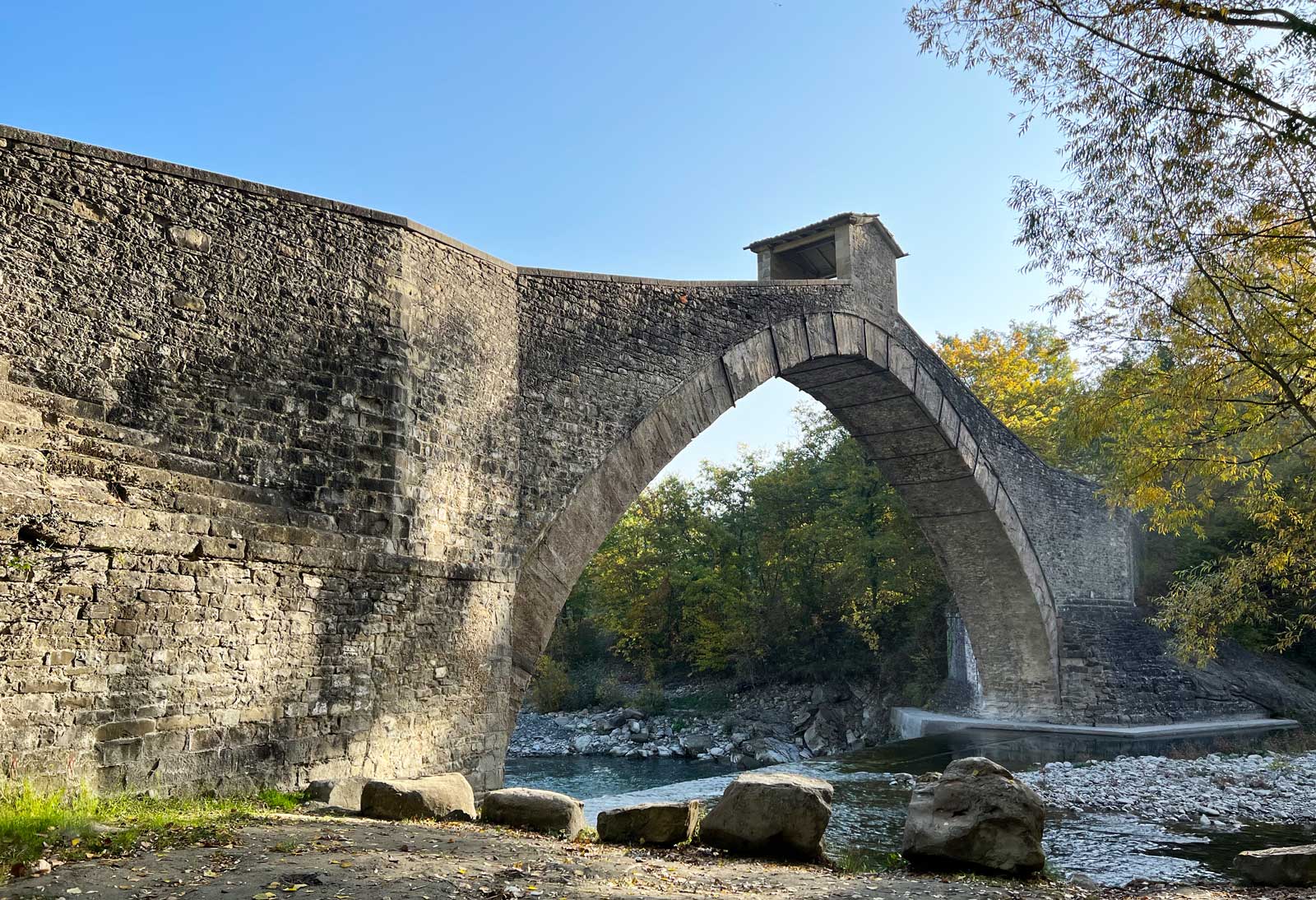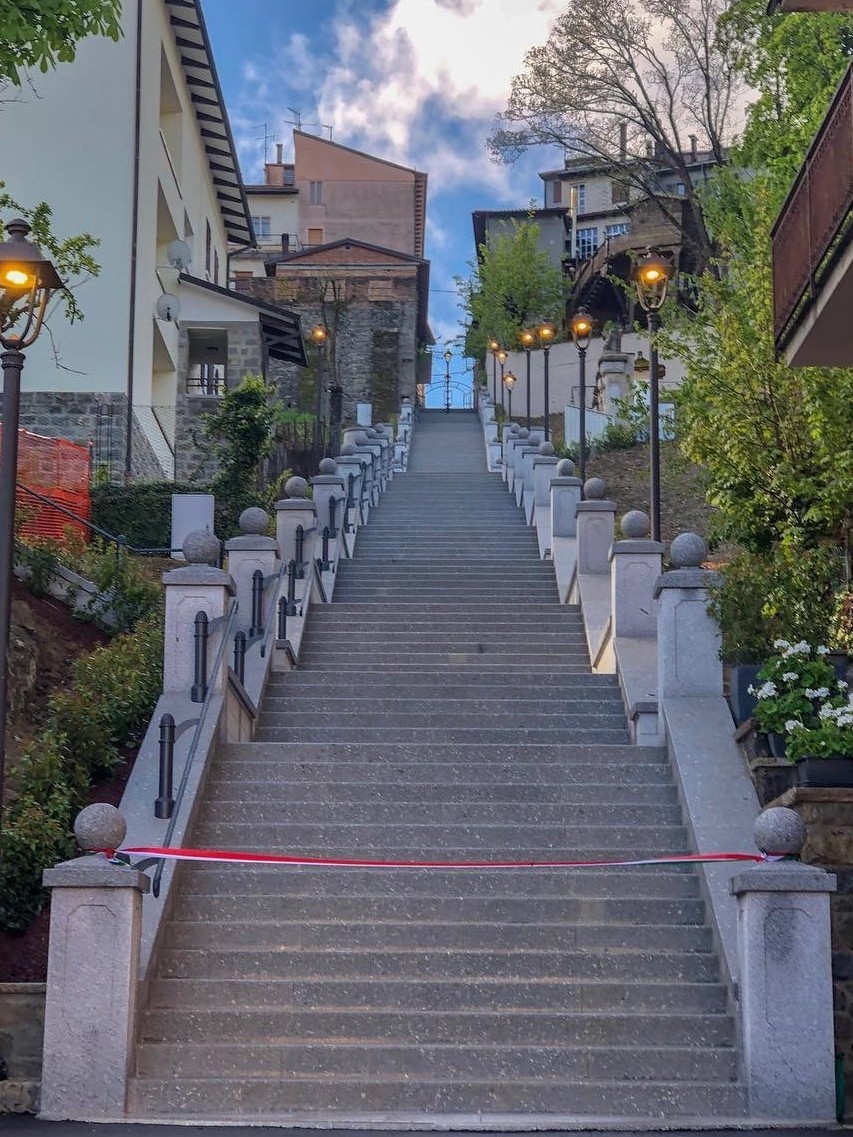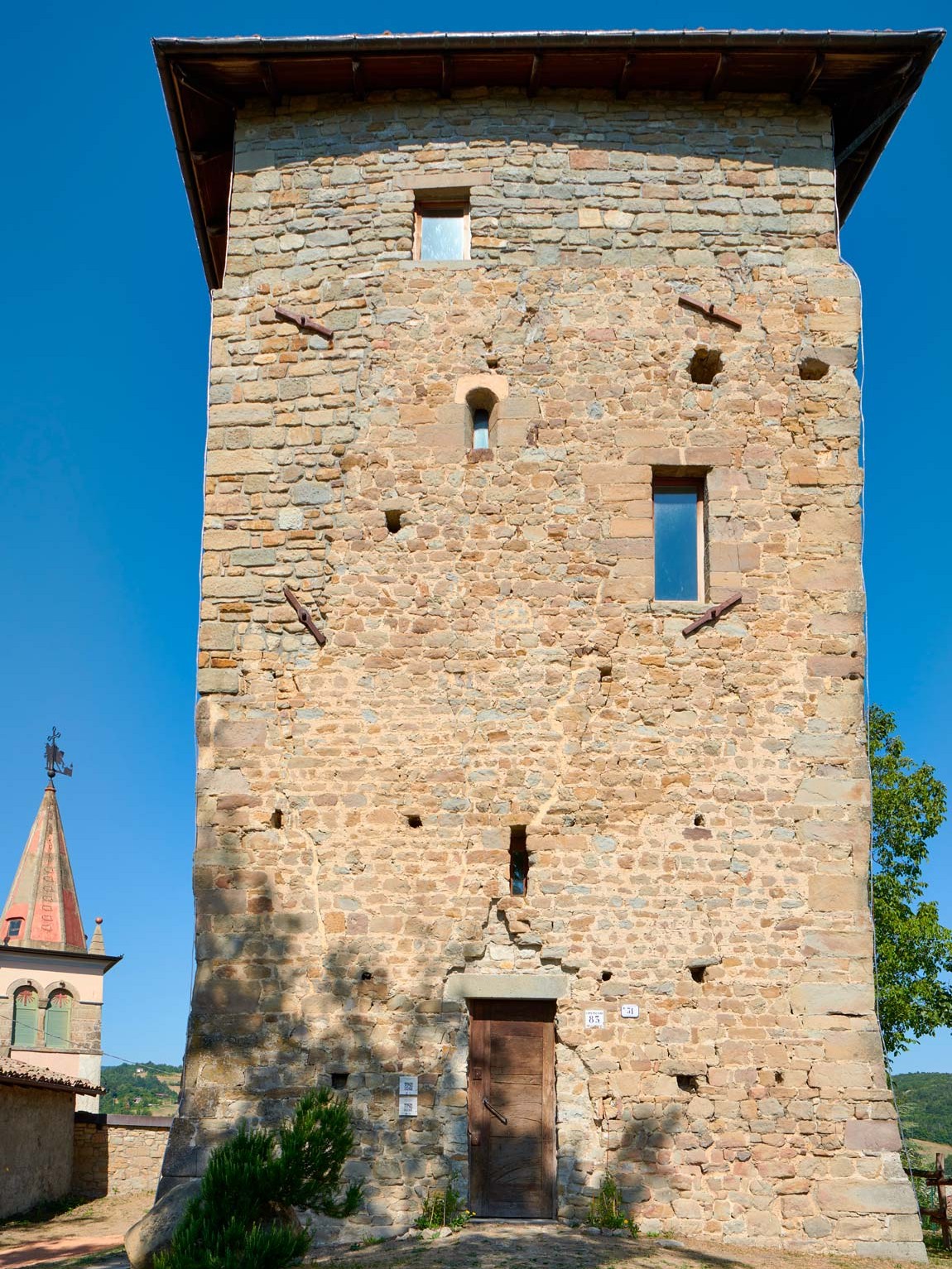Impressive Olina Bridge is without doubt one of the most remarkable engineering works of its time in the area.
Although no longer open to motor traffic, which now travels over the nearby bridges of Pian della Valle (linking Pavullo with Acquaria) and Prugneto (linking Pavullo with Sestola), Olina Bridge is still very much admired for the lightness of its arch, which has darkened in colour over time, blending in perfectly with the rocky landscape of the river Scoltenna.
The present-day bridge is the result of reconstruction work dating to 1522. It would seem that the cities of Florence and Lucca covered some of the costs, which were largely borne by the Montecuccoli family and the Podestà of Sestola. The fact that Florence and Lucca both contributed financially goes to illustrate the strategic role played by the road system of the area of Frignano from very early times.
Olina Bridge was built following criteria considered highly advanced for the time.

The arch is indeed parabolic in shape, its curve in alignment with the line of the loads, subjecting all the ashlars of the arch to a load of pure compression, thus eliminating the need for traditional building components, which stone would not have withstood.
The bridge crosses the river bed in a single arch, parabolic in shape.
The abutment on the right bank is set on a rocky outcrop which forms a natural bridgehead on this side.
The abutment on the left bank is completely artificial. The second, smaller arch was later built on this side as reinforcement, and to stem the power of the waters of the river in full flow.
It is interesting to note that the bridge widens at either end, in order to allow carts to pull over to one side, making way for any oncoming traffic arriving from the opposite direction.
In the middle of the bridge, at its highest point, there stands a shrine, covered with a dual-pitched canopy, which dates to 1581.






